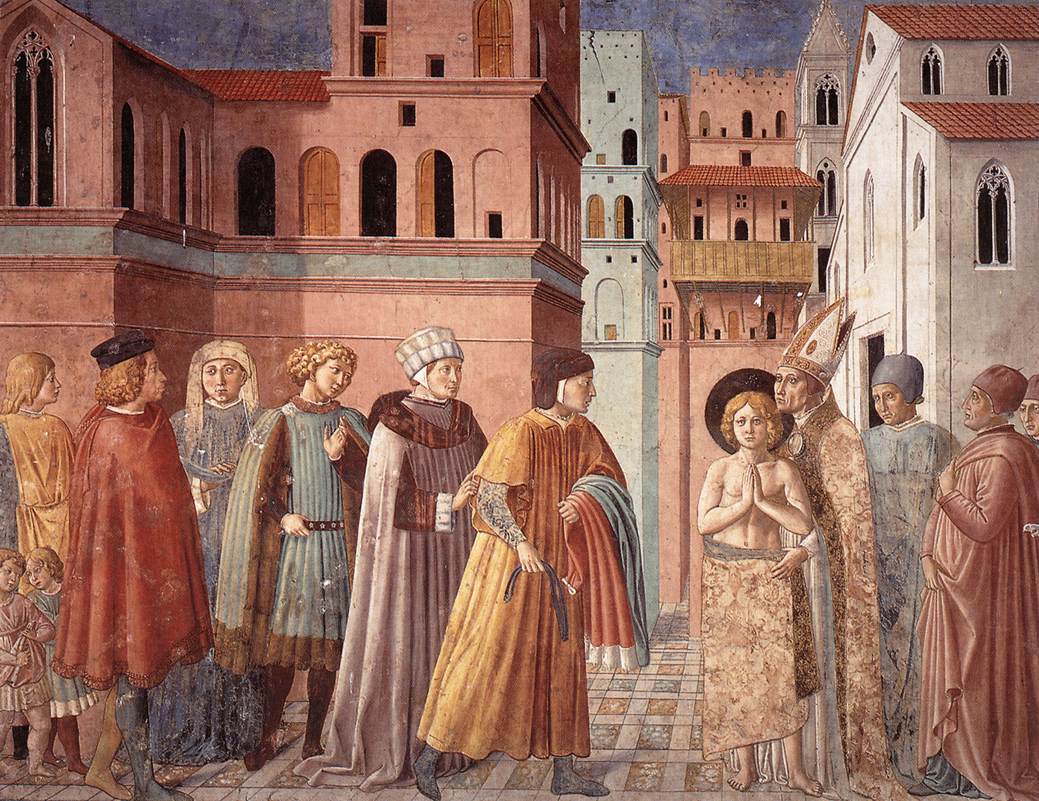
Renunciation of Worldly Goods, The Bishop of Assisi Dresses St Francis. Scenes from the Life of St Francis (Scene south wall). 1452 Fresco in the basilica of St. Francis in Assisi.
As a young man, Francis of Assisi gave away cloth and other goods from his merchant father’s supplies. His father sued his son in court, trying to impress on him that his behavior was unacceptable. But Francis took of all his clothes in court and laid them at his father’s feet, renouncing everything that he had from his father so as to avoid future accusations that he was giving to the poor out of someone else’s resources. The bishop of Assisi, who was the judge in the court, gave Francis something to wear and Francis stepped out into the world as a beggar. He changed Western Europe forever.
Although almost everyone knows the story of St. Francis preaching to the birds, not many people know any other stories that are told about St. Francis. One legend that is among my favorites tells that in the city of Gubbio, where Francis lived for some time, was a wolf “terrifying and ferocious, who devoured men as well as animals.” Francis had compassion upon the townsfolk, and so he went up into the hills to find the wolf. Soon, fear of the animal had caused all his companions to flee, though the saint pressed on. When he found the wolf, he made the sign of the cross and commanded the wolf to come to him and hurt no one. Miraculously the wolf closed his jaws and lay down at Francis’ feet.
“Brother Wolf, you do much harm in these parts and you have done great evil,” said Francis. “All these people accuse you and curse you … But brother wolf, I would like to make peace between you and the people.” Then Francis led the wolf into the town, and surrounded by startled citizens made a pact between them and the wolf. Because the wolf had “done evil out of hunger, the townsfolk were to feed the wolf regularly. In return, the wolf would no longer prey upon them or their flocks. In this manner Gubbio was freed from the menace of the predator. Francis even made a pact on behalf of the town dogs, that they would not bother the wolf again. Finally, to show the townspeople that they would not be harmed, Francis blessed the wolf.”
According to tradition, Gubbio gave the wolf an honorable burial and later built the Church of Saint Francis of the Peace at the site. During renovations in 1872, the skeleton of a large wolf, apparently several centuries old, was found under a slab near the church wall and then reburied inside.
Because of St. Francis association with the wolf of Gubbio and the birds he preached to, many churches bless animals on the Sunday nearest to St. Francis’ feast day (October 4).

Nice reflection